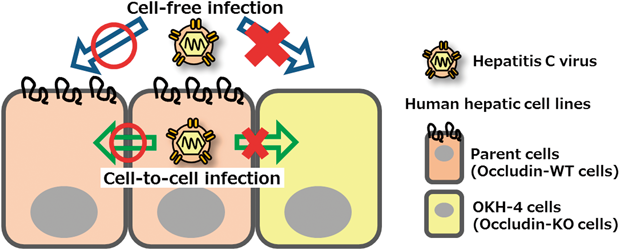-
Yoshitaka Shirasago
Department of Biochemistry and Cell Biology, National Institute of Infectious Diseases
-
Yoshimi Shimizu
Department of Biochemistry and Cell Biology, National Institute of Infectious Diseases Graduate School of Pharmaceutical Sciences, Osaka University
-
Isei Tanida
Department of Biochemistry and Cell Biology, National Institute of Infectious Diseases
-
Tetsuro Suzuki
Department of Infectious Diseases, Hamamatsu University School of Medicine
-
Ryosuke Suzuki
Department of Virology II, National Institute of Infectious Diseases
-
Kazuo Sugiyama
Center for the Study of Chronic Liver Diseases, Keio University School of Medicine
-
Takaji Wakita
Department of Virology II, National Institute of Infectious Diseases
-
Kentaro Hanada
Department of Biochemistry and Cell Biology, National Institute of Infectious Diseases
-
Kiyohito Yagi
Graduate School of Pharmaceutical Sciences, Osaka University
-
Masuo Kondoh
Graduate School of Pharmaceutical Sciences, Osaka University
-
Masayoshi Fukasawa
責任著者
Department of Biochemistry and Cell Biology, National Institute of Infectious Diseases
電子付録
2016 年 39 巻 5 号 p. 839-848
- Published: 2016/05/01 Received: 2015/12/16 Released on J-STAGE: 2016/05/01 Accepted: 2016/01/18 Advance online publication: 2016/02/17 Revised: -
(EndNote、Reference Manager、ProCite、RefWorksとの互換性あり)
(BibDesk、LaTeXとの互換性あり)



